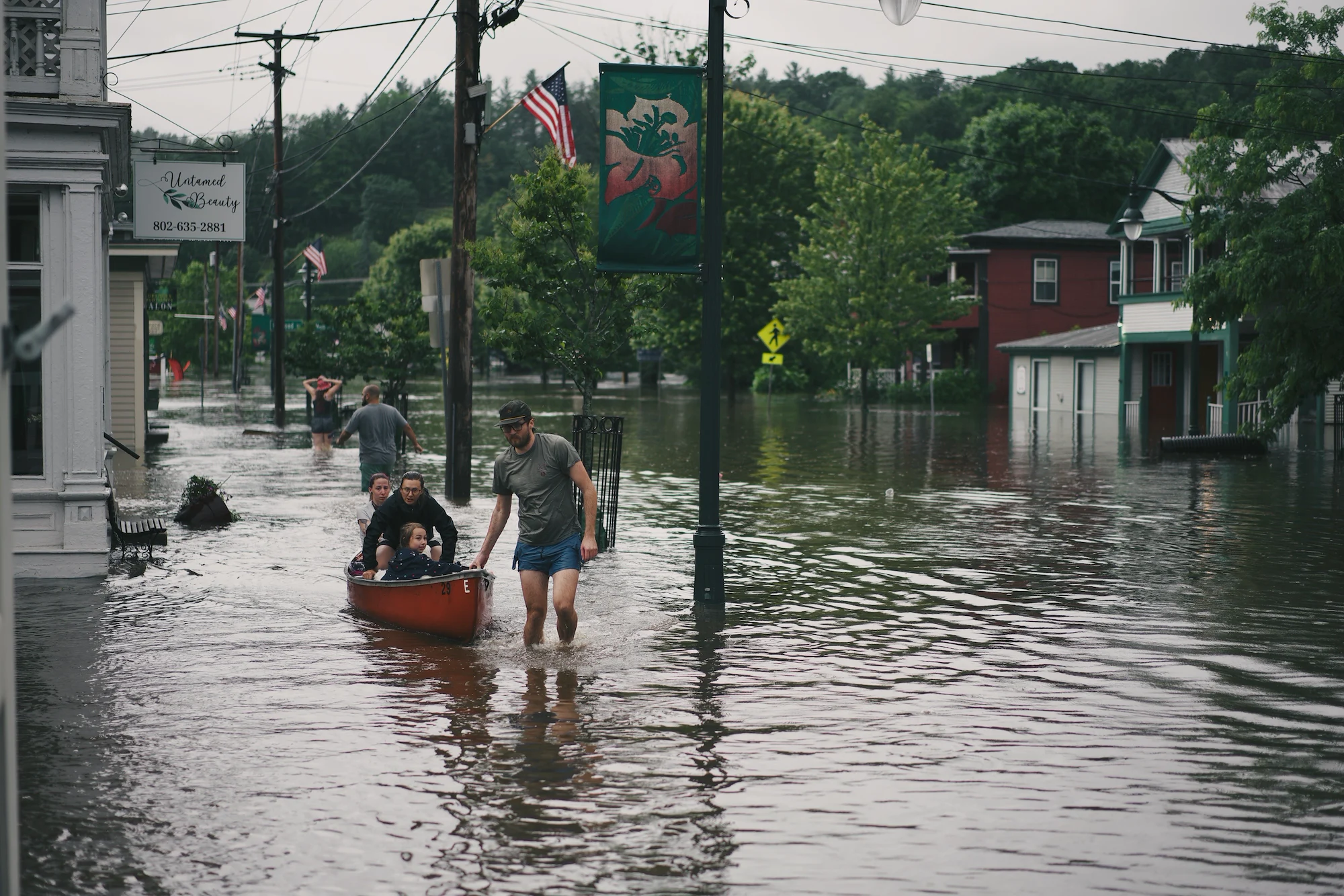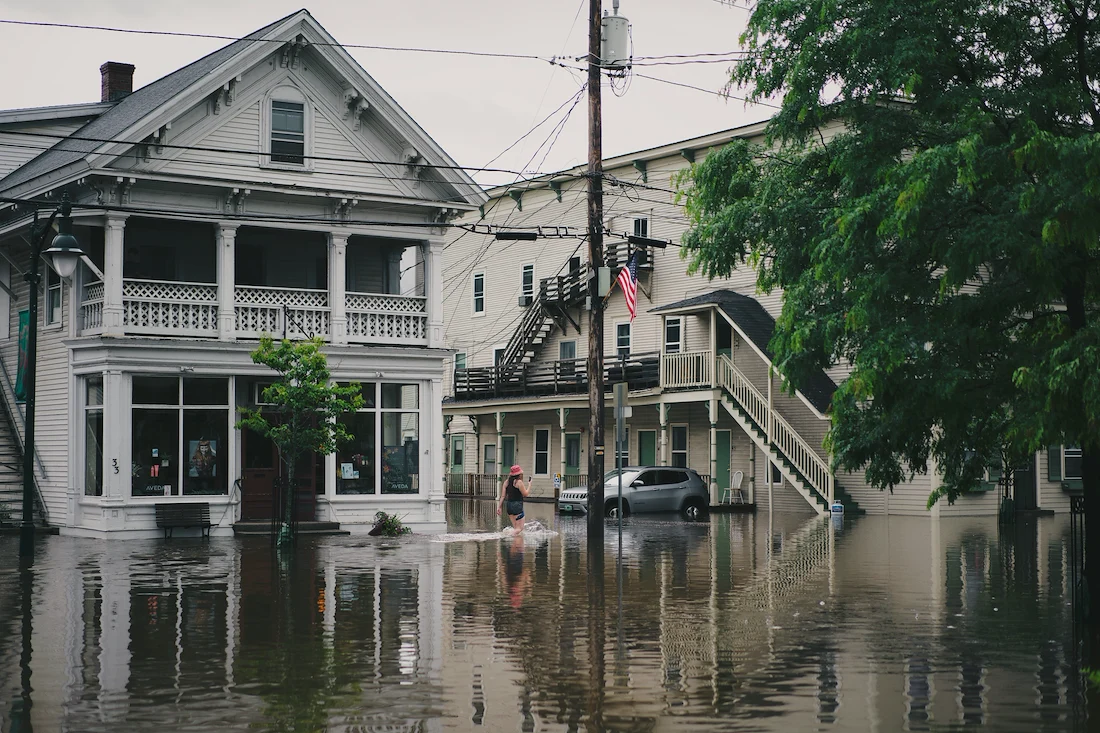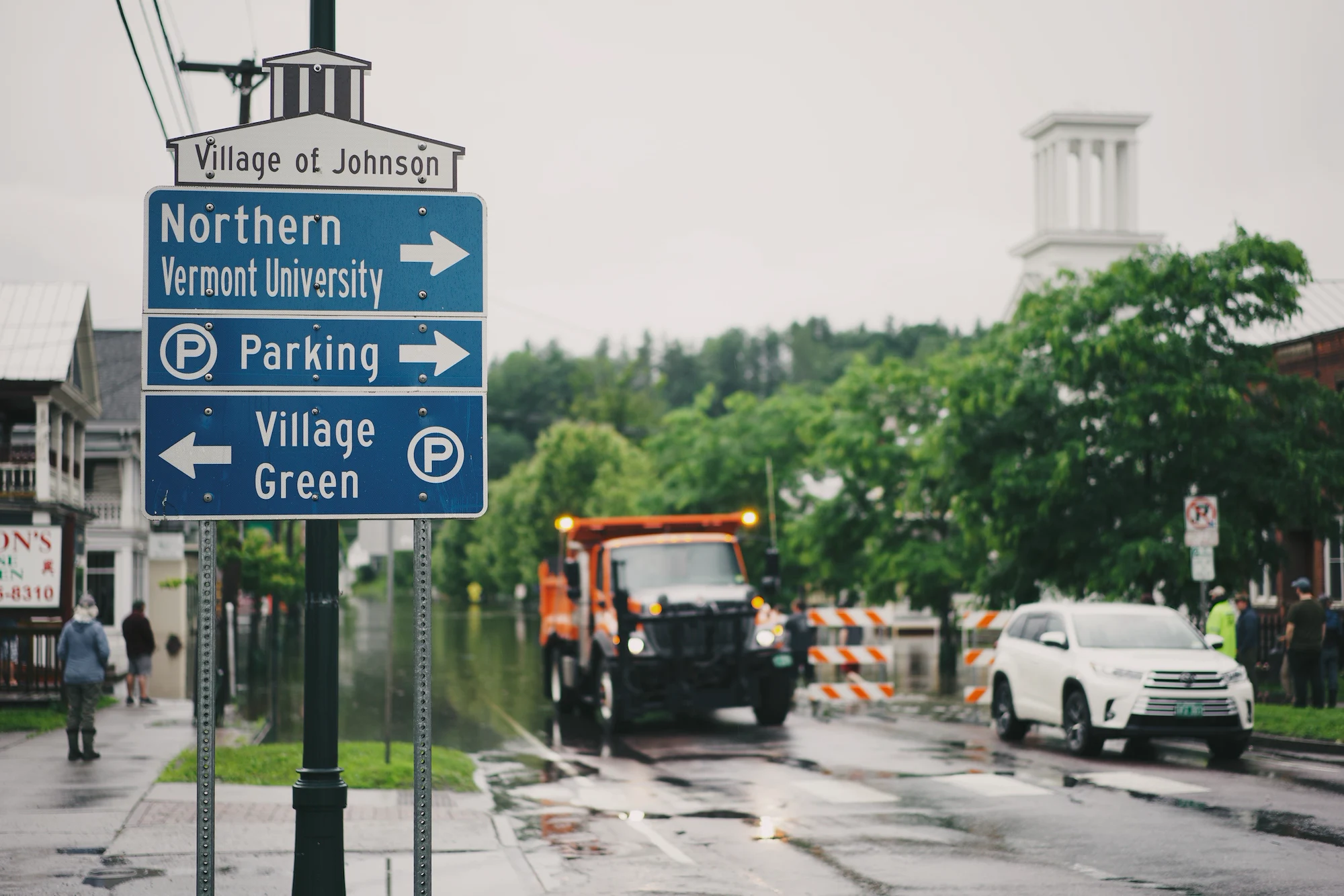
Photo Credit: Robert Haverly ©2023
Vermont, known for its idyllic landscapes and progressive values, was recently in the grips of a natural disaster. Flash floods wreaked havoc across the state, leaving a trail of destruction and affecting various industries, including the budding cannabis sector. As Vermonters pick up the pieces in the aftermath of the floods, we examine the historical context that shaped Vermont’s cannabis industry, the struggles faced by cannabis growers and businesses, the hurdles of federal illegality, and the collective efforts to recover and rebuild.
A Brief History of Vermont’s Cannabis Industry
Vermont has a rich history of cannabis use, with early records suggesting that hemp was cultivated in the state during the 18th and 19th centuries. However, like in many parts of the United States, the cultivation of cannabis eventually fell under prohibition during the early 20th century. Despite these challenges, Vermont’s countercultural roots played a significant role in fostering a strong cannabis culture that would eventually lead to significant changes.
The first significant step towards cannabis legalization came in 2004 when Vermont decriminalized the possession of small amounts of marijuana. The state then took a groundbreaking leap in 2018, legalizing recreational cannabis use and cultivation for adults over 21. Finally, in 2020, Vermont legalized the regulated sale of recreational cannabis, allowing entrepreneurs to establish licensed businesses.
The Flourishing Cannabis Industry Cut Short by Floods
Since the launch of legal cannabis sales in 2022, Vermont’s cannabis industry had been steadily growing. The Cannabis Control Board, tasked with overseeing the market, issued licenses to over 500 businesses, employing more than 1,100 people. By May 2023, the state had already collected a substantial $24 million in cannabis tax revenue, indicating a thriving industry.
However, the floods of 2023 abruptly halted this upward trajectory, causing catastrophic damage to the cannabis sector. The historic floods ravaged cannabis farms, production facilities, and dispensaries, leaving the industry reeling from the impact. For business owners, the destruction was profound, with some reporting the loss of hundreds of thousands of dollars worth of products and infrastructure.
Photo Credit: Robert Haverly ©2023
Challenges Unique to Cannabis Growers
In the wake of the floods, Vermont’s cannabis growers faced daunting challenges in assessing the extent of the damage. Unlike traditional agricultural crops, there were no established guidelines for classifying damaged or potentially damaged cannabis plants. This lack of clarity made the recovery process particularly difficult, with growers unsure of the future viability of their crops.
Contaminated soils, a common issue after flooding, posed an additional threat to the health of cannabis plants. Growers had to be vigilant about potential pathogens that could hinder future yields and threaten consumer safety. To safeguard product quality, rigorous testing of the surviving crops became a top priority.
The Ongoing Struggle of Federal Illegality
Adding to the distress of cannabis growers and businesses, the federal status of cannabis rendered them ineligible for any federal disaster aid. Cannabis dispensaries, classified as federal entities, could not access funds from agencies like the Small Business Administration or FEMA due to cannabis’s federal illegality.
Despite Vermont Governor Phil Scott’s efforts to secure a U.S. Department of Agriculture disaster declaration, cannabis farmers were still excluded from federal crop insurance benefits. The lack of federal assistance created financial hardships for businesses already operating on thin margins, leaving many struggling to recover.
Hope on the State Level
In the face of these challenges, Vermont’s cannabis community showcased remarkable resilience and solidarity. Industry advocates rallied together, actively seeking support at the state level. The Vermont Cannabis Control Board and Vermont Growers Association collected comprehensive data on damages, aiming to present a compelling case to the Legislature for emergency state funding.
Fundraising initiatives were also launched to help flood-damaged cannabis businesses get back on their feet. Benefit concerts and joint proceeds aimed to provide much-needed relief, offering a glimmer of hope in the darkest of times.
Conclusion
The 2023 floods in Vermont had a profound impact on the state’s cannabis industry, testing its resilience and highlighting the barriers imposed by federal illegality. As Vermont’s cannabis growers and businesses grapple with the aftermath of the floods, they face unique challenges in assessing damages and ensuring product safety. The federal restrictions on cannabis continue to hinder recovery efforts, underscoring the need for comprehensive regulatory reform.
Nonetheless, the Vermont cannabis community’s unwavering spirit and collaborative efforts offer hope for the future. The determination to rebuild and thrive reflects the industry’s commitment to both economic growth and consumer well-being. As the state navigates the road to recovery, the cannabis industry stands united, poised to continue its journey toward a brighter and more sustainable future.
EXPLORE MORE NEWS
Newsletter








